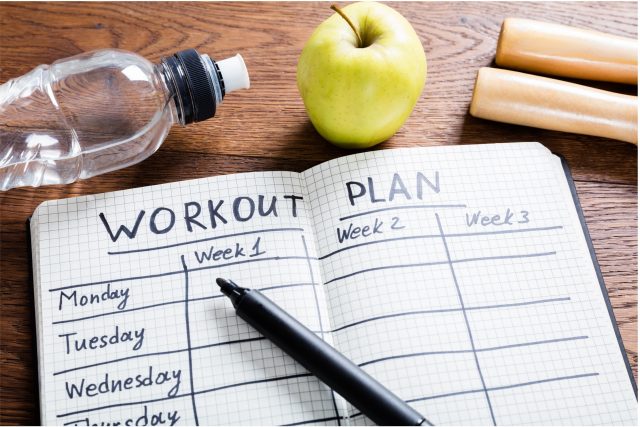When it comes to the gym, the majority of people will simply walk in without a concrete workout plan and spend time on a variety of their favorite machines. While there is nothing wrong with this, it is not the most effective way to reach a fitness goal. Unfortunately, the truth is that most individuals do not know how to form a workout schedule and cannot afford a good trainer. Luckily, creating your own workout schedule is a skill that can be learned and should be learned by anyone serious about fitness.
When creating a workout schedule that will fit your routine, it is essential to consider three things – consistency, goals, and variety. How can you remain consistent with your workout schedule, what goals would you like to reach regarding fitness, and what combination of exercises will help you reach these goals without the risk of injury. Eli Max, a lifelong fitness enthusiast, is a major proponent of individuals creating their own tailored workout schedules. Eli Max encourages all people considering improving their health to create their own workout plan as it will help grow their overall knowledge of fitness and help them reach their fitness goals.
Although every person will have their own unique fitness goals, the majority of people starting their fitness journey are looking to lose weight and build muscle. To meet these goals, individuals must first understand the variety of exercises best suited for losing weight and building muscle and incorporate them into their weekly schedule.
Strength training: Also known as weight training, resistance training, and muscular training, strength training is any physical movement in which a person uses their body weight or equipment to build muscle, endurance, and strength. Strength training exercises are crucial for those looking to build muscle and can also help increase bone strength and prevent future injury.
Cardio: Cardio is defined as any exercise that increases the heart rate for an extended length of time. Cardio is a great way to lose weight as cardio exercises burn a greater number of calories than the majority of strength training exercises.
HIIT: HIIT workouts stand for high-intensity interval training, which is an exercise strategy in which an individual alternates between short periods of intense anaerobic exercise with short recovery periods. It is seen as another excellent exercise for weight loss and helps to build lean muscle.
When creating your weekly schedule, most experts suggest having at least two designated rest days for recovery, which will prevent injury. However, individuals who have a strong fitness background may opt for only one rest day. When building a weekly workout schedule, it is important that individuals vary what exercises they do each day to prevent injury and provide short periods for recovery. Although it is very common for new gym-goers to keep a high intensity throughout all their workouts, this can create long-lasting health issues and severely damage joints. For this reason, weekly workout schedules should alternate between high-intensity workouts and low-intensity workouts.
Example of An Comprehensive Workout Schedule:
Monday: Upper-body strength training
By solely focusing on upper body strength training, individuals will target specific muscles within the upper body and rest the area during the following day’s workout.
Tuesday: Lower-body strength training
As you generally need 48 hours of recovery time between working the same muscle group, by having a separate day for lower body strength training, this person will rest their upper body while still completing an intense workout.
Wednesday: Low-impact activity
As Monday and Tuesday were split high-impact days, Wednesday must involve a low-impact exercise in order to give the body a rest period. A low-impact workout can include yoga, barre, light cycling, or even swimming; however, individuals must refrain from pushing themselves on low-impact days and stay away from activities that put added strain on joints.
Thursday: HIIT Workout
HIIT workouts are shown to burn more calories than the majority of cardio exercises, making them a must-have in any workout schedule focused on weight loss. Additionally, researchers have found evidence that individuals who utilize HIIT workouts within their weekly workout schedule are more likely to stick to their routine! Eli Max states that because this workout is high intensity, a HIIT workout must always be followed up with a rest day.
Friday: Rest Day
Rest days are essential for recovery and should be a valued aspect of a workout schedule. On rest days, individuals should avoid all high-impact exercises and instead stretch and practice a light form of exercise such as yoga. Eli Max suggests that those who are still looking to complete some low-impact exercise and reduce their caloric intake go for a walk or a short bike ride.
Saturday: Full-Body Workout
Many people believe in doing full-body strength workouts twice a week; however, those who are just beginning their workout routine can start by doing one total-body strength workout a week. A total-body training session should involve at least one exercise for each major muscle group:
- Quads (front of your legs).
- Butt and hamstrings
- Chest, shoulders, and triceps: (“push” muscles).
- Back, biceps, and grip ( “pull” muscles).
- Core
Sunday: Second Rest Day








